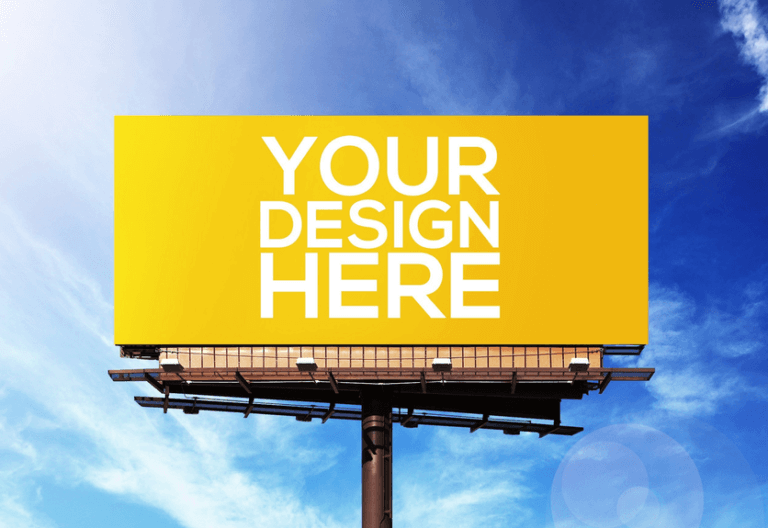
We see them all the time, those giant 14’ H X 48’ W signs that are lit up in busy intersections and major highways. Telling us to buy that new shade of lipstick, or to remind us that McDonald’s uses 100% arabica beans in their coffee. Billboards are in your face and there’s nothing anyone can do about it. The combination of their massive size and alluring designs captivate pedestrians, drivers and their companions passing by. There’s a reason we see these colossal signs all over cities, highways, and even in the countryside. It’s because billboards are unignorable mediums that are highly effective at gathering massive amounts of impressions from demographics that advertisers choose to message. But something so effective must come with an expensive price tag, right? A billboards price depends on a variety of factors. These factors include location of the billboard, formatting, frequency, reach, and demographics. To understand how much money it costs to advertise on a billboard, lets explore the variables that constitute billboard pricing.
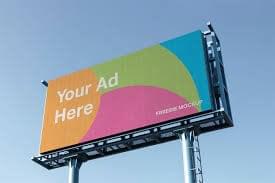
The importance of billboard locations
When looking to advertise your brand through an OOH medium, having an appropriate billboard location to advertise can mean the difference between an effective and ineffective billboard. Advertising in a location that isn’t optimal for your product or brand wastes advertising money that could have been allocated to an effective marketing medium. It’s very important for brands to be aware of the volume of traffic that passes by the billboard, the visibility of the billboard, and how cluttered the environment. All three variables can help advertisers determine which billboard locations will result in the greatest impact.
Understanding these three key variables to selecting a successful billboard location for your brand also enables advertisers to measure potential billboard locations and compare them to others in order to find an optimal location. The ability to measure and compare billboard locations to other locations isn’t just a tool used by advertisers. Billboard supplying companies also use billboard measuring tools to determine the cost of billboards, depending on the three key variables needed along with other factors so they can measure their own billboards and price them accordingly.
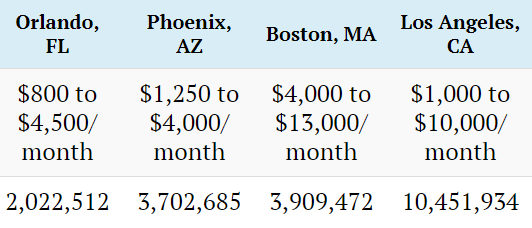
How billboard formatting affects pricing
Billboard supplier companies such as Astral Outdoor Advertising, OutFront Media & Pattison Billboards have a variety of formatting options that advertisers can take advantage of to better reach their target audience including billboard sizes. Billboards that belong to the smaller family of billboards called “Posters” are priced less than their much larger counterparts, Super-Boards. While horizontal posters measure around 10’ H X 20’ W,– 10’ H x 22’ W, Super-boards are far bigger in comparison and measured at 14′ H x 48′ W. The size of the billboard really matters as a gargantuan sized billboard is going to be far more captivating than a billboard half its size.
Static billboards
Another formatting option that significantly affects how much it costs to advertise on billboards is if the billboard is static, trivision, or digital. The most commonly used billboard format that brands use is the static billboard. Static billboards are printed using Polyvinyl Chloride, a material that is weather resistant and won’t fade in colour or damage for weeks. The production cost of creating a static billboard typically costs $300-$500 and billboard designing can cost advertisers between $150-$1000.
Trivision billboards
An alternative to static billboards that brands have been taking advantage of for cost effective OOH campaigns are trivision billboards. Trivision billboards are comprised of rotating prisms that are able to contain three separate advertisements due to their 3-sided shape. Trivision billboards are also a cost-effective alternative to the other two billboard formats as brands can share the advertising space cost with other brands that are displaying ads on the same trivision billboard. Depending on the supplier, companies also have the option to purchase all three sides; enabling companies to advertise three of their own brands on one billboard.
Digital billboards
The most expensive and versatile formatting option belongs to digital billboards. Digital billboards have been capturing driver’s and pedestrian’s attention since 2005 and have been utilized by brands to message their target market with creative executions that static and trivision billboards aren’t capable of deploying. Digital billboards are incredibly innovative, they can play videos, stream live data, stream live camera footage, and play multiple ads. The cost of advertising on a digital billboard is higher than static & trivision billboards as digital billboards use up to 30 times more energy than the average American household, creating large fees to use them. Furthermore digital billboard suppliers often only allow brands to advertise on digital billboards that rotate through other brand advertisements. However, there are few exceptions that allow brands to be the soul brand on the digital billboard if they pay a hefty price.
How frequency impacts billboard advertising costs
Before brands deploy their OOH billboard ads, they must consult with billboard supplier companies to determine how many months their ad will run as slots to advertise billboards are sold typically by the month. The amount of time a brand chooses to advertise on billboards heavily impacts the ultimate cost of advertising on a billboard. The difference between the cost of a one-month billboard rental versus a four-month rental can be huge. The average cost of a billboard in moderately populated cities is $4000, which brands must have a large amount of disposable advertising dollars to spend if they are planning an advertising campaign that uses OOH billboards for longer than one month. However there are cost effective options for advertisers who are looking to use billboards but with a lower frequency than one month.
BlipBillboards
An example of a billboard supplier that allows brands to advertise for a minimum frequency less than one month is a supplier named BlipBillboards. The supplier allows advertisers to pay for individual days on digital billboards, and each “blip” equates to 7.5-10 seconds of ad screen time before transitioning to another brand’s ad.
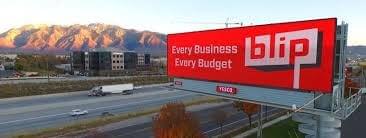
How reach impacts billboard advertising costs
The number one goal for advertisers using billboards is to make as many impressions as possible. Although majority of billboards don’t use technology to record impressions, advertisers and billboard supplier companies are still able to determine the reach/number of impressions of a billboard. This is done by researching the population of the surrounding billboard location and the volume of traffic that passes by the billboard each day, even each hour. A golden rule to follow is that if the reach is high, the cost is too.
How demographics impact billboard advertising costs
Placing your billboard in an area where the primary demographic of your target market is exposed to can reap a high ROI for brands looking to advertise. Billboard suppliers are aware of this and as such increase the cost of billboards in areas that are hot spots for certain demographics. Data on demographics also helps the relationship between billboard suppliers and advertisers as they gain knowledge on what areas yield the highest amount of certain demographics allowing suppliers to recommend billboard locations to advertisers. Without accurate data on the environment of the billboard population’s gender, income & age, suppliers would not be able to properly price billboards.

The interaction between suppliers & advertisers
An advertiser needs to decide their desired target market, location to advertise, frequency and billboard formatting. Once that is finalized, they must then contact a potential billboard supplier to negotiate the most optimal billboard for the customer’s requirements. This negotiation can significantly impact the cost of advertising on a billboard because possible cost saving deals unknown to the advertiser may be offered. The supplier has a chance to also recommend optimal billboard locations for their customers as specific information on billboard reach will often be undisclosed until negotiating with billboard suppliers. The supplier can also inform the potential customer on advertising space that’s been under used, allowing advertisers to use a cost-effective billboard. Contacting a billboard supply company is often times the only way for brands to learn the cost to advertise on billboards because most suppliers like OutFront and astral do not publicly post their rate cards.
Rate cards
Billboard suppliers often use rate cards to communicate prices of different billboard formats & other OOH mediums to potential customers. Rate cards allow advertisers to examine the fixed costs of billboards (Typically the maximum price one would pay) before choosing one to deploy their advertisement on, almost like a dinner menu but for billboards. Rate cards can sometimes be found in media kits of print companies or can be sent to customers after contacting billboard suppliers. Without rate cards, suppliers wouldn’t be able to communicate their fixed billboard prices to potential customers.
Other factors that determine billboard costs
We have covered the five most significant factors that determine the cost of advertising on a billboard: location, formatting, frequency, reach and demographics. Despite these being the most influential factors in calculating the price of advertising on a billboard, there are other variables that can impact the ultimate billboard advertising cost.
Time of year
The time of year can affect how much it costs to advertise on a billboard as seasons & holidays play a role in consumer’s purchasing behaviour. Advertisements during times in the year that have high amounts of traffic will be slightly more expensive in comparison during slower seasons. Peak times of the year where consumers are often commuting determine if the price increases or decreases. This is why high traffic seasons are priced higher and explains why holidays are more expensive for brands to advertise.

Traffic
Not to be confused with the volume of population that passes by and is exposed to advertisements, but literal mind-numbing traffic. Billboard advertisements are far more effective when strategically located in areas that are notorious for lots of stressful traffic jams. Despite being the bane to drivers, traffic jams serve as a friend to advertisers as drivers stuck in long traffic jams spend more time viewing billboard advertisements than they would have if the roads were clear.
Weather and natural environment
The weather and our natural environment do play a role in determining the cost of advertising on billboards. If the public is aware of phenomenon’s that would influence people to stay inside, for instance multi-day snow and rainstorms or natural disasters the cost of advertising on billboards would fall. This is because the volume of traffic viewing the billboard would decrease depending on the severity of the weather. This is very relevant today as COVID-19 has critically decreased the amount of traffic in major cities like Toronto and Vancouver until the government deems it safe for the public to operate amidst COVID-19.
So what does it cost?
After examining all the factors, variables, and influences that determine how much it costs to advertise on a billboard, it is evident that the cost of advertising cannot be answered by one mere number. No billboard will ever have an absolute fixed cost as there are too many factors dependent on time & consumer behaviour that dictate the value billboard locations have to advertisers.
The same location & time of a billboard spot can be profitable for some brands and useless to others, even further justifying why billboards can never be just one fixed price. It is fair that billboard suppliers do not publicly broadcast their rate cards as determining a fair price that reflects the value of a billboard location has to be achieved through communicating with the billboard supplier.
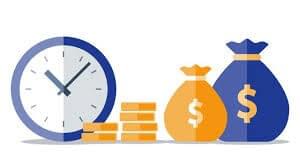
Conclusion
Most advertisers don’t have the knowledge of billboard advertising costs instantly available to them. However, potential advertisers have the tools to understand what requirements are needed to rent a successful billboard and only need to pick up the phone or e-mail a billboard supplier to get started on establishing the price for their next billboard.
May 1st, 2020


